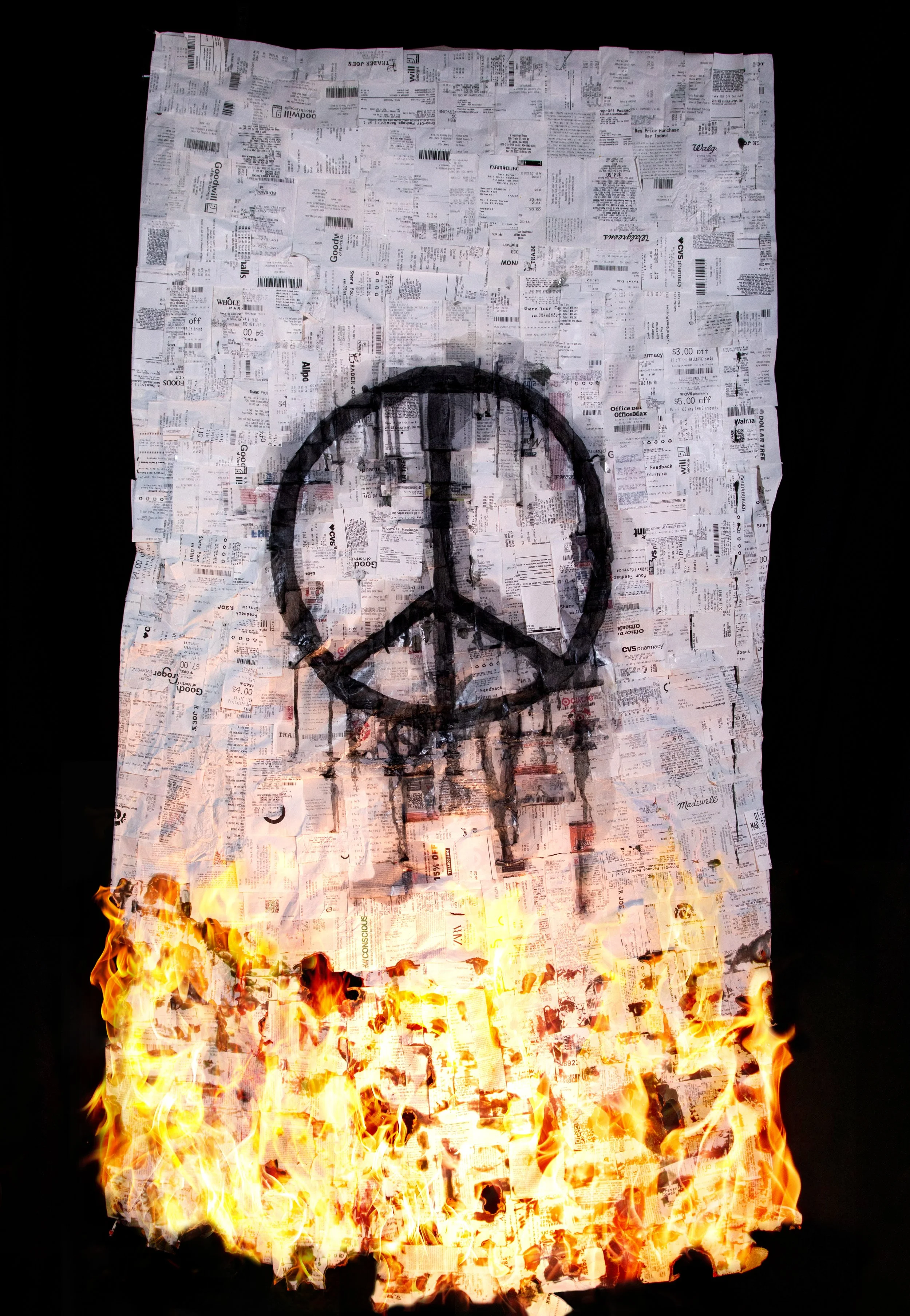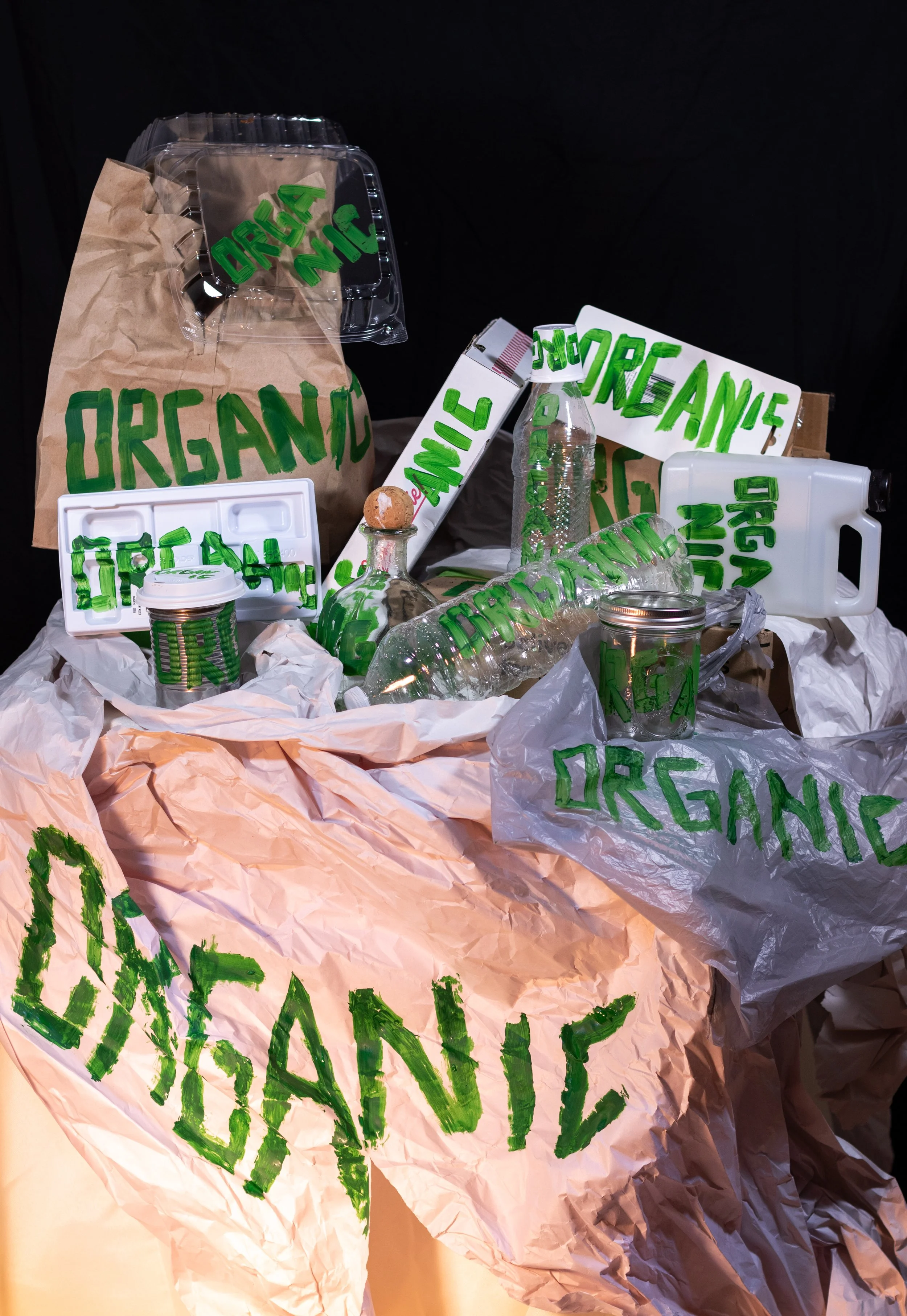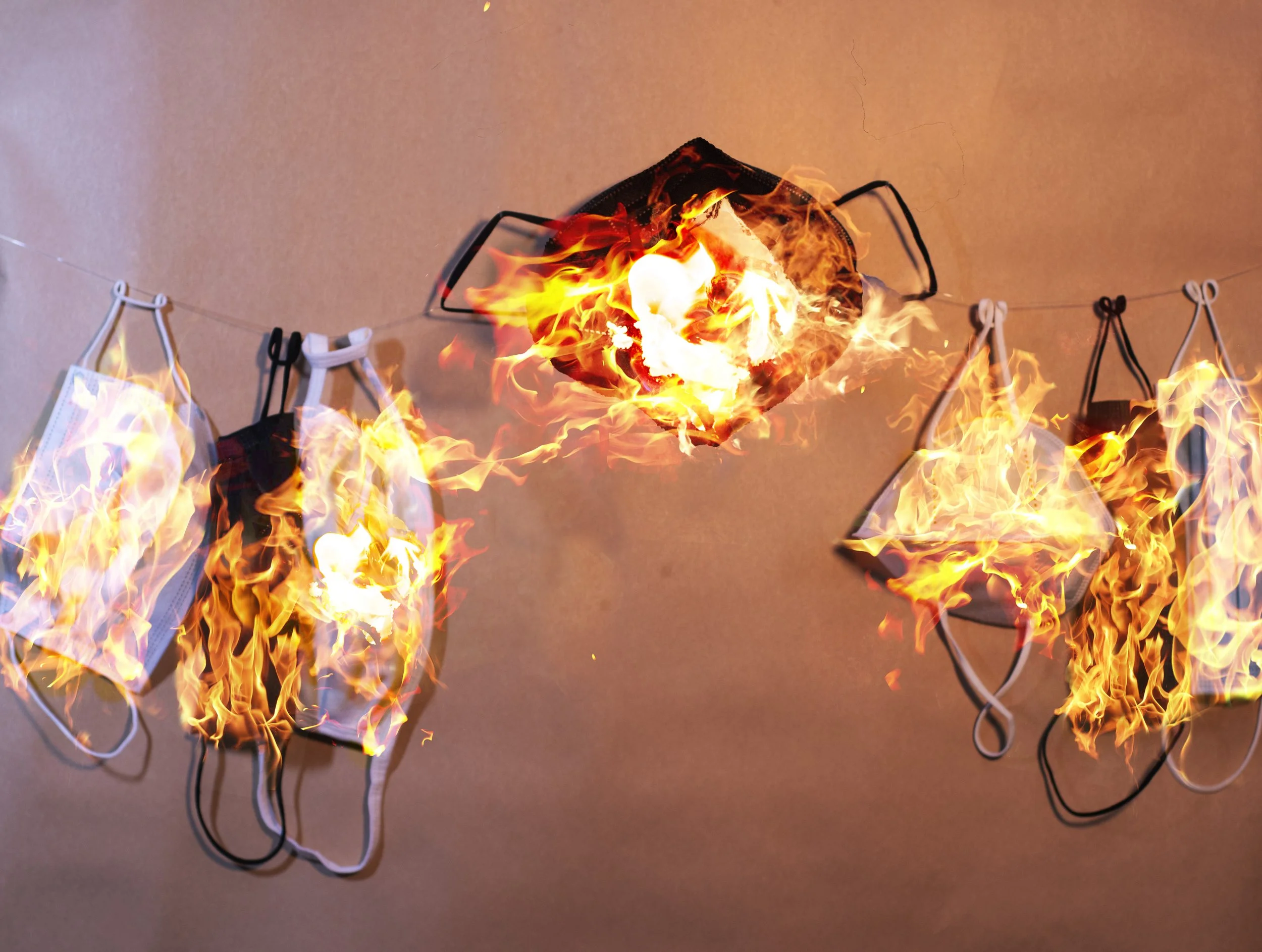NOT OK
This series encompasses a three-part representation of concerning themes occurring globally and how they affect us as individuals and as a larger society.
“I am not OK” is used to express the individual emotional state and provide an understanding of how global issues affect us on a personal level.
“We are not OK” expands on the effects of global issues on our communities and how we seek support in times of strife. It addresses what change looks like and how we build movement.
“This is not OK” is a didactic reference to the problems in how we live and why it should be socially unacceptable as well as force us to change our perspectives to address the issues we see all around us. We are constantly reminded that our world is in trouble, yet we all consciously choose to ignore it in some capacity.



Funnel of Transparency
Artist: Hannah Ranson
2022
Mixed Media
Around the globe we celebrate innovation, continuous technological advancement, and the discovery of solutions to existing problems. However, if and when these ideas do not abide by an exponential economic growth model, they are rendered useless. The dismissal of lethal risks to the public’s health and environmental stability, censorship of evidence-based truths, and the disavowal of scientist and field experts have been minimized to blasé sentiments in the height of information overload, doomscrolling, and 24-hour news cycles. Yet, the splintering of government transparency is steadily deteriorating the public’s trust in elected officials and government institutions, and poses a significant threat to democracy as we know it.
This artwork came about in a means to capture the wasteful and frustrating dismissal of critical information that has the potential to save lives and our planet. The colorful marbles and white pebbles used in the funnel represent evidence-based information and ideas that are made by scientific experts in regards to tangible issues our world faces. The chrome marbles and black pebbles represent the false claims and misinformation that so often bleeds from government sources. The clear web is representative of governmental bureaucracy and the obscure decision-making process that happens behind closed doors. The vase, used as the reservoir of ideas in this scenario, was chosen for its design and shape to symbolize the cycles and larger systems at play. A vase was utilized as it represents the idea of where things that are alive go to die.
Eligibility Overdose
Artists: Hannah Ranson & David Denton
2022
Photography
The pandemic, and our response to it, has reiterated inequalities both within and between nations when it comes to access. Before the first public COVID-19 vaccination was produced and administered, there was growing global divide in how it would be distributed. From the beginning of the pandemic, many countries demanded that vaccine stockpiles be shared equitably however, the wealthiest countries quickly administer the COVID-19 vaccines to their populations and disregarded the needs of others. Countries like the US, UK and other wealthy western nations were in favor of not removing the intellectual property protections on vaccines which would have allowed others in the world to use the patent and stop the spread. They dictated when, how, and who would have access to COVID-19 vaccines.
The pharmaceutical industry did not develop these vaccines alone, but instead utilized billions of dollars of public funding. This funding was instrumental in their discovery and development. Without price controls and better access, marginalized people throughout the world are bearing the brunt of this pandemic.
Of the top 20 largest biomedical companies in the world by revenue, nine are located within the US. It is no coincidence that the US is also among the world’s top users of addictive substances, substances that these same companies produce. Americans are at the greatest risk of drug-related deaths and currently have the most people with prescription painkiller addictions in the world with 3.8 million people misusing these medications.
This artwork depicts the concurrent and insidious issues of vaccine hoarding and drug addiction.
$Peace.99
Artist: Hannah Ranson
Contributor: David Denton
2022
Mixed Media
War-torn and greed-driven, the state of the world lingers on economic, environmental, and overall societal collapse. The year 2022 has offered a glimpse of the future turmoil we face, with oil and power leading to war and causing an even more rapid climate demise. Caught in the thresholds of capitalism, we are led to question how we might be contributing to the disintegration of our planet and what is truly out of our physical control. The inspiration for this artwork draws on the white flag, an internationally recognized symbol for surrender or peace, being set aflame to depict unrest and blatant opposition of what the flag stands for. The use of receipts as the base of the flag acknowledges consumption at the individual level, while the peace sign made from motor oil and acrylic paint indicates the perpetual state of capitalism invoked by our nation’s leaders.
Warren Buffering
Artists: Hannah Ranson & David Denton
2022
Mixed Media
Why does everything buffer at “99%”? You can try restarting, installing new features, clearing cache, and old data but the problem persists letting you know that there is a deeper-rooted problem at play that cannot be ignored.
Loading screens inform the user that something is happening, and we can assume it’s either something good or bad, but we have absolutely no way to tell what is happening behind the scenes. Although much of the loading is complete at 99%, your screen will continue to spin and not proceed without that 1%.
“We are the 99%” is a political slogan widely used that refers to the income and wealth inequality in the United States, with a concentration of wealth among the top-earning 1%. It reflects an opinion that "the 99%" are paying the price for the mistakes of a tiny minority within the upper class. No matter what the 99% needs or wants to do, the wealth, influence, and power of the 1% creates barriers and continues to perpetuate inequality. The richest 1% now has as much wealth as roughly half of the world. Instead of an economy that works for the prosperity of all, for future generations, and for the planet, we have instead created an economy for the 1%.
The idea for this piece began with the concept of buffering at 99% and morphed into a critique of our current economy under the constraints of capitalism. Under capitalism, we expect exponential growth year after year. We are stuck in a loop of overconsumption, under-compensation, and competition for basic needs. There is no end in sight - that is until we run out of resources and class stratification is limited to only two groups, the rich and the poor. On the opposite side of capitalism is a circular economy, a regenerative economic model that reduces production and consumption and aims to decouple growth from the reliance on finite resources. This artwork took its shape as a symbol of how a circular economy might resolve the many catastrophes under capitalism.
The various colors emerged from the concept of a heat map and in this case depicted the progression of destruction. The color scheme starts with green and ends with red. Red was intentionally used as the majority of the circle as it indicates society passed the point of no-return well before we were ready to acknowledge and solve the issues at hand.





Sustain(un)able
Artist: Hannah Ranson
2022
Mixed Media & Photography
The inspiration behind this frame arose as a critique on the idea that a growing economy and sustainable energy sources can co-exist. Continuing to overproduce while implementing a few clean energy standards is merely putting band aids on a gaping wound. For us to truly limit climate change’s inevitable impacts, sustainability must be decoupled an ever-growing capitalist market. The more we grow, and produce, and consume, the further we get away from this true organic and sustainable state we so often see falsely marketed. This frame represents the double entendre of sustainability, a word that is often loosely thrown around to describe ‘eco-friendly’ practices, and the action of sustainability, which if truly depicted would be represented by a blank frame. The concept of sustainability closely mirrors societies’ convoluted understanding of the word organic. Labeling a food “organic” does not mean that the product is nutritious, healthy, or safe, just as labeling a product or set of practices as sustainable provides a false narrative unless there is a zero-sum action to back it up.






